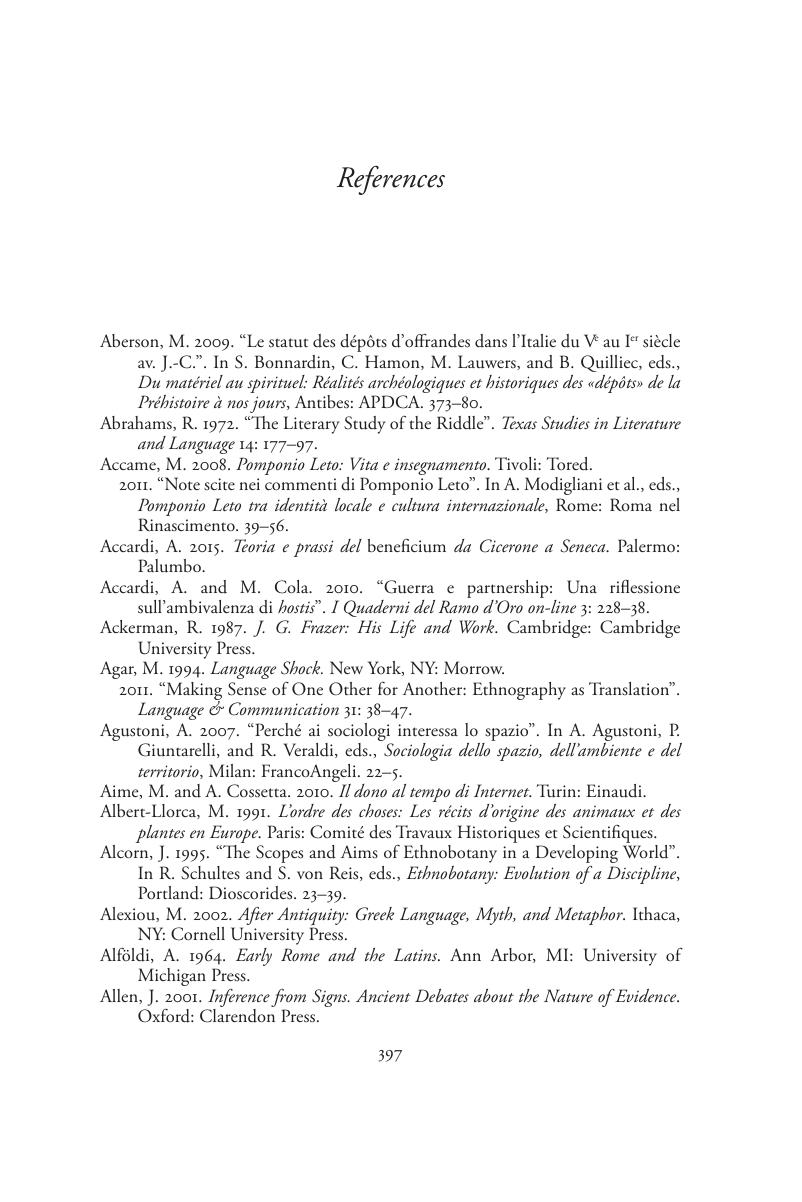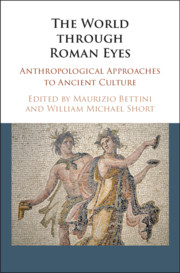Book contents
- The World through Roman Eyes
- The World through Roman Eyes
- Copyright page
- Contents
- Figures
- Contributors
- Preface
- Abbreviations
- Introduction
- Chapter 1 Comparison
- Chapter 2 Metaphors
- Chapter 3 Polytheism
- Chapter 4 Myth
- Chapter 5 Sacrifice
- Chapter 6 Witches
- Chapter 7 Kinship
- Chapter 8 Friendship and the Gift
- Chapter 9 Economy
- Chapter 10 Space
- Chapter 11 Animals
- Chapter 12 Plants
- Chapter 13 Images
- Chapter 14 Signs
- Chapter 15 Riddles
- References
- Greek Index
- Latin Index
- Subject Index
- References
References
Published online by Cambridge University Press: 24 September 2018
- The World through Roman Eyes
- The World through Roman Eyes
- Copyright page
- Contents
- Figures
- Contributors
- Preface
- Abbreviations
- Introduction
- Chapter 1 Comparison
- Chapter 2 Metaphors
- Chapter 3 Polytheism
- Chapter 4 Myth
- Chapter 5 Sacrifice
- Chapter 6 Witches
- Chapter 7 Kinship
- Chapter 8 Friendship and the Gift
- Chapter 9 Economy
- Chapter 10 Space
- Chapter 11 Animals
- Chapter 12 Plants
- Chapter 13 Images
- Chapter 14 Signs
- Chapter 15 Riddles
- References
- Greek Index
- Latin Index
- Subject Index
- References
Summary

- Type
- Chapter
- Information
- The World through Roman EyesAnthropological Approaches to Ancient Culture, pp. 397 - 460Publisher: Cambridge University PressPrint publication year: 2018



